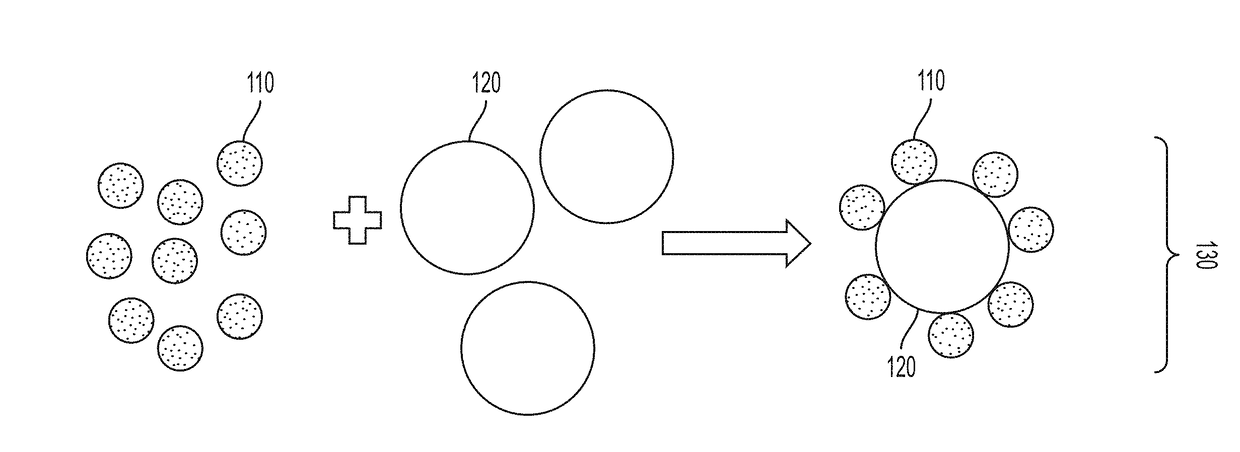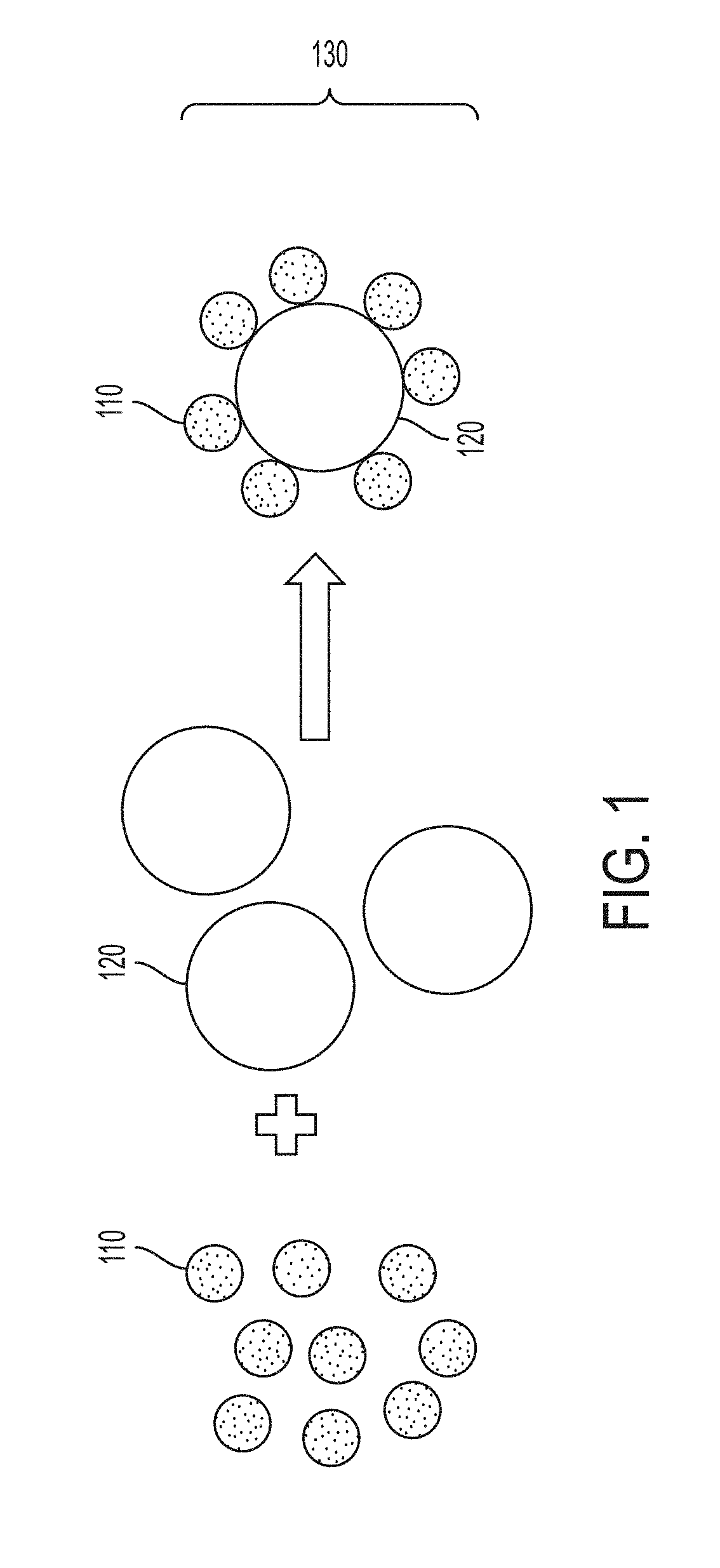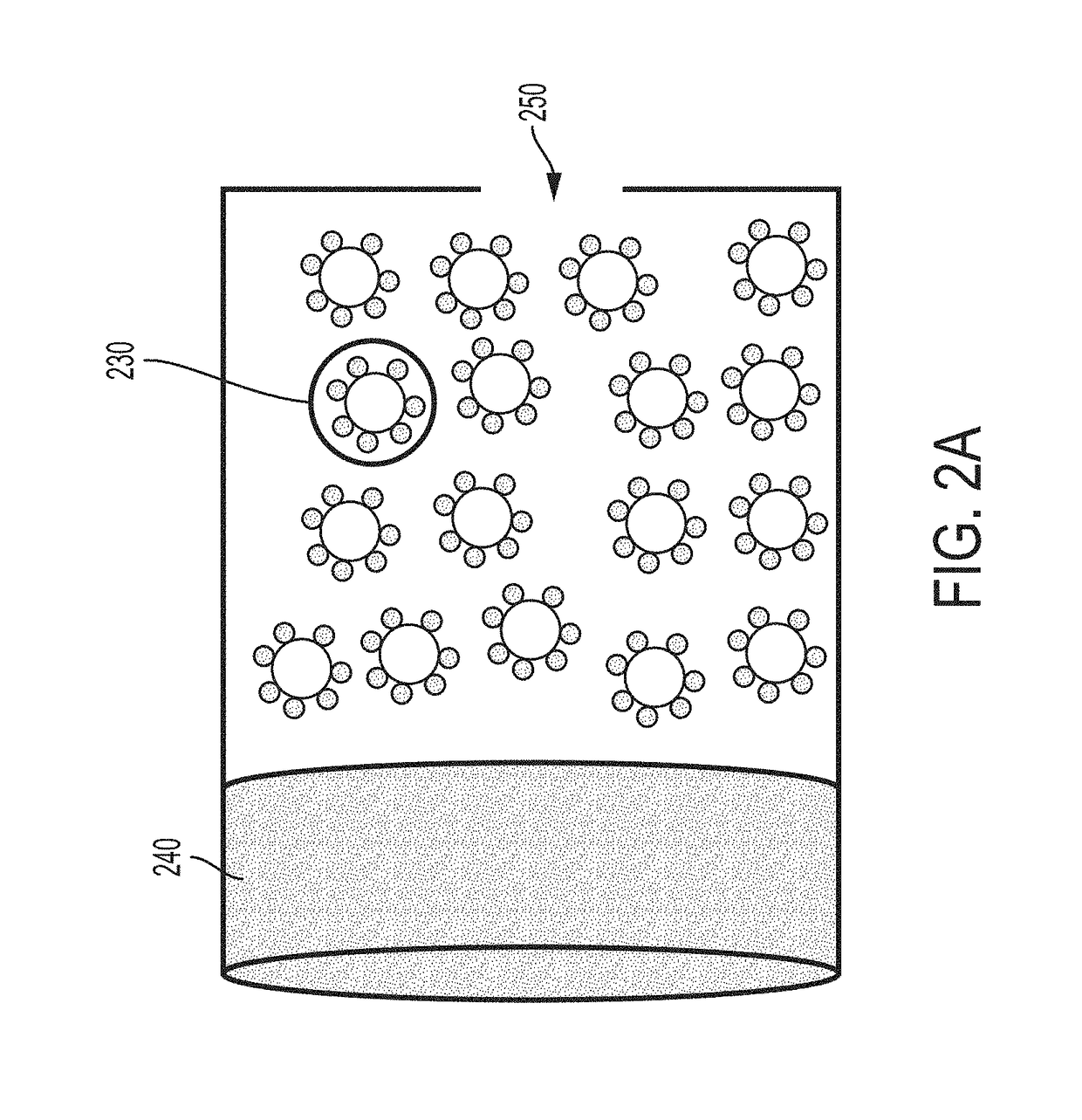Nanoparticle composite welding filler materials, and methods for producing the same
a composite welding and nanoparticle technology, applied in the field of welding rods, can solve the problems of high-performance alloys that are limited in weldability or joinability, hot cracks generating strength-limiting defects within the final joined structure, and alloys that cannot achieve their full potential as low-cost, high-strength options for engineering applications
- Summary
- Abstract
- Description
- Claims
- Application Information
AI Technical Summary
Benefits of technology
Problems solved by technology
Method used
Image
Examples
example
[0224]The effectiveness of this invention (in some variations) is demonstrated in a multipass laser-welded system with aluminum alloy Al 7075 powder as the precursor material combined with ZrH2 nanoparticles.
[0225]Aluminum alloy 7075 micropowder is purchased from Valimet Inc. (Stockton, Calif., U.S.). The powder consists of Al (balance), Zn (5.40%), Mg (2.25%), Cu (1.54%), Cr (0.19%), Fe (0.17%), Si (0.13%), Mn (0.02%), and Ti (2 powder) is purchased from US Research Nanomaterials Inc. (Houston, Tex., U.S.).
[0226]Laser welding is performed on a Concept Laser (Grapevine, Tex., U.S.) M2 selective laser melting machine with single-mode, CW modulated ytterbium fiber laser (1070 nm, 400 W), scan speed up to 7.9 m / s, spot size 50 μm minimum. Powder handling parameters: 80 mm×80 mm build chamber size, 70 mm×70 mm build plate size, 20-80 μm layer thickness. The atmosphere is Ar or N2, 2. Processing is done under a flowing, inert argon atmosphere with oxygen monitoring. All processing is com...
PUM
| Property | Measurement | Unit |
|---|---|---|
| Fraction | aaaaa | aaaaa |
| Concentration | aaaaa | aaaaa |
| Size | aaaaa | aaaaa |
Abstract
Description
Claims
Application Information
 Login to View More
Login to View More - R&D
- Intellectual Property
- Life Sciences
- Materials
- Tech Scout
- Unparalleled Data Quality
- Higher Quality Content
- 60% Fewer Hallucinations
Browse by: Latest US Patents, China's latest patents, Technical Efficacy Thesaurus, Application Domain, Technology Topic, Popular Technical Reports.
© 2025 PatSnap. All rights reserved.Legal|Privacy policy|Modern Slavery Act Transparency Statement|Sitemap|About US| Contact US: help@patsnap.com



